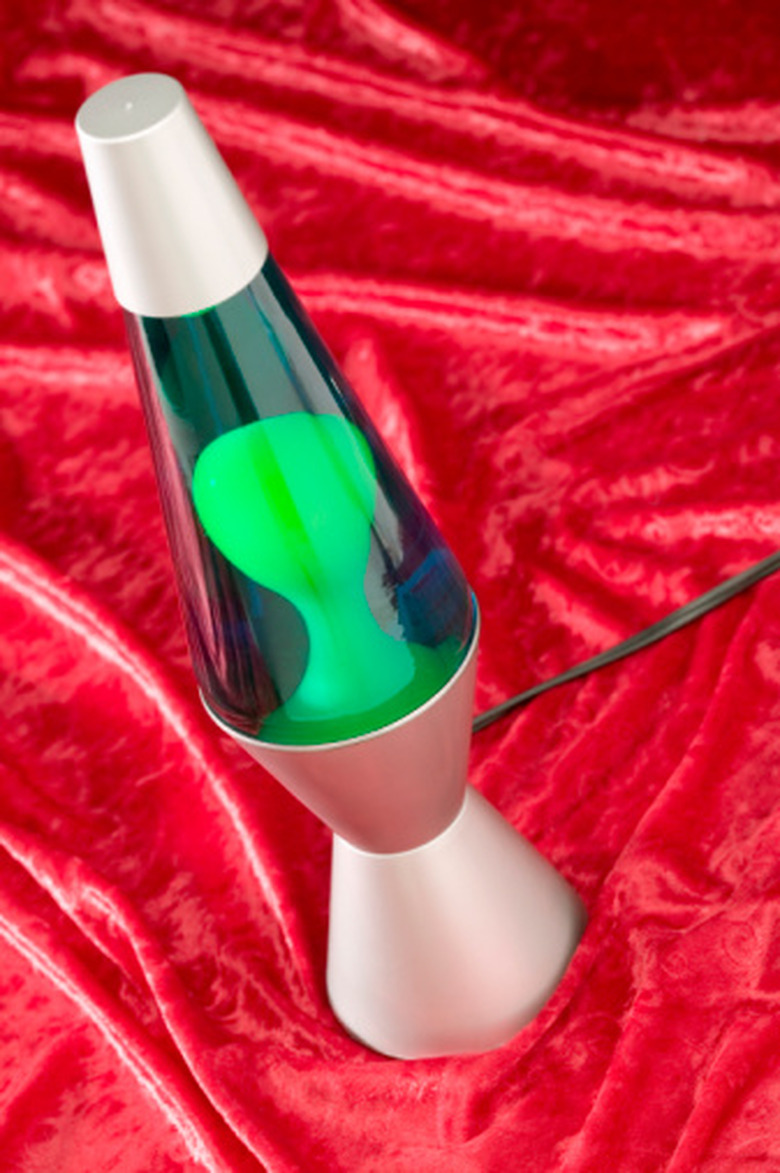Lava Lamp Science Projects
Some people use lava lamps as nostalgic items or simply because they look "cool." A student who is interested in finding out how a lava lamp works can create his own as a science project. The creation of the lava lamp and the observations related to its operation give the student insight into the inner workings of a lava lamp and a creative science project to do at home or school.
Real Lava Lamp Versus Homemade
Real Lava Lamp Versus Homemade
A real lava lamp that you buy from the store is composed of different elements than one you can make at home. A store-bought lava lamp operates when a mixture of paraffin, mineral oil, carbon tetrachloride and dye is heated by the light bulb in the bottom of the lamp, creating globs of goo that rise when heated and fall when they cool. A homemade lava lamp does not use heat at all. Instead, it uses liquids that will not mix and seltzer tablets to make the globs rise and fall. Making your own real lava lamp is not advised, however, since carbon tetrachloride is toxic and unsafe to use in the home environment.
Making the Lamp
Making the Lamp
You need a 16 or 20-ounce soda bottle that has been washed out to create your lamp. A clear bottle is preferred over a colored one to allow you to see the process inside better. Other necessary ingredients include vegetable oil, water, food coloring of your choice and seltzer tablets. Fill the bottle 3/4 full of vegetable oil. Pour the water to the top of the bottle to top it off. Add food coloring to the water; whatever amount is required until the water is a dark enough color that will be easy to see.
Experiment Process
Experiment Process
Now that you have created the water bottle, you can conduct your experiment. Break the seltzer tablet into several pieces. Drop one piece into the bottle and watch the reaction that takes place. The tablet will bubble and will create changes in the oil and water mixture. Once the tablet piece stops bubbling, add another tablet to keep the reaction going. To create a true lava lamp effect, shine a flashlight beneath the bottle to light it up.
Why It Works
Why It Works
There are specific reasons why this experiment works the way that it does. The key is using liquids that have different polarities. Many people think of magnets when they hear the word "polarity." However, some molecules work the same way as magnets. Oil and water molecules will not bond because water has a polarity and oil is nonpolar. This explains why the water-based food coloring will only bond with the water molecules and will not color the oil. Water is also heavier than the oil and will sink. The seltzer tablets release carbon dioxide, which blends with the water and allows it to float in the oil.
Cite This Article
MLA
Turtenwald, Kimberly. "Lava Lamp Science Projects" sciencing.com, https://www.sciencing.com/lava-lamp-science-projects-8068491/. 24 April 2017.
APA
Turtenwald, Kimberly. (2017, April 24). Lava Lamp Science Projects. sciencing.com. Retrieved from https://www.sciencing.com/lava-lamp-science-projects-8068491/
Chicago
Turtenwald, Kimberly. Lava Lamp Science Projects last modified August 30, 2022. https://www.sciencing.com/lava-lamp-science-projects-8068491/
